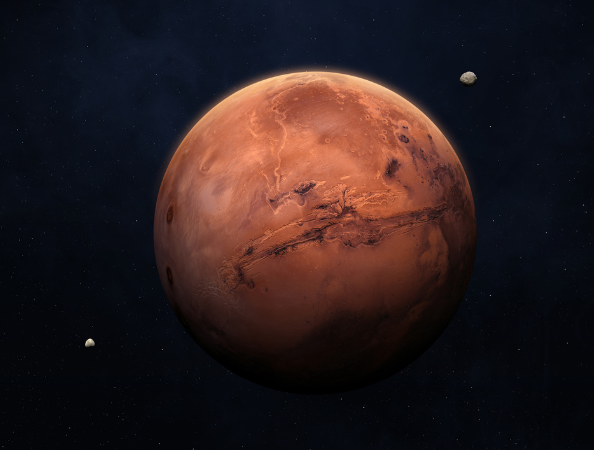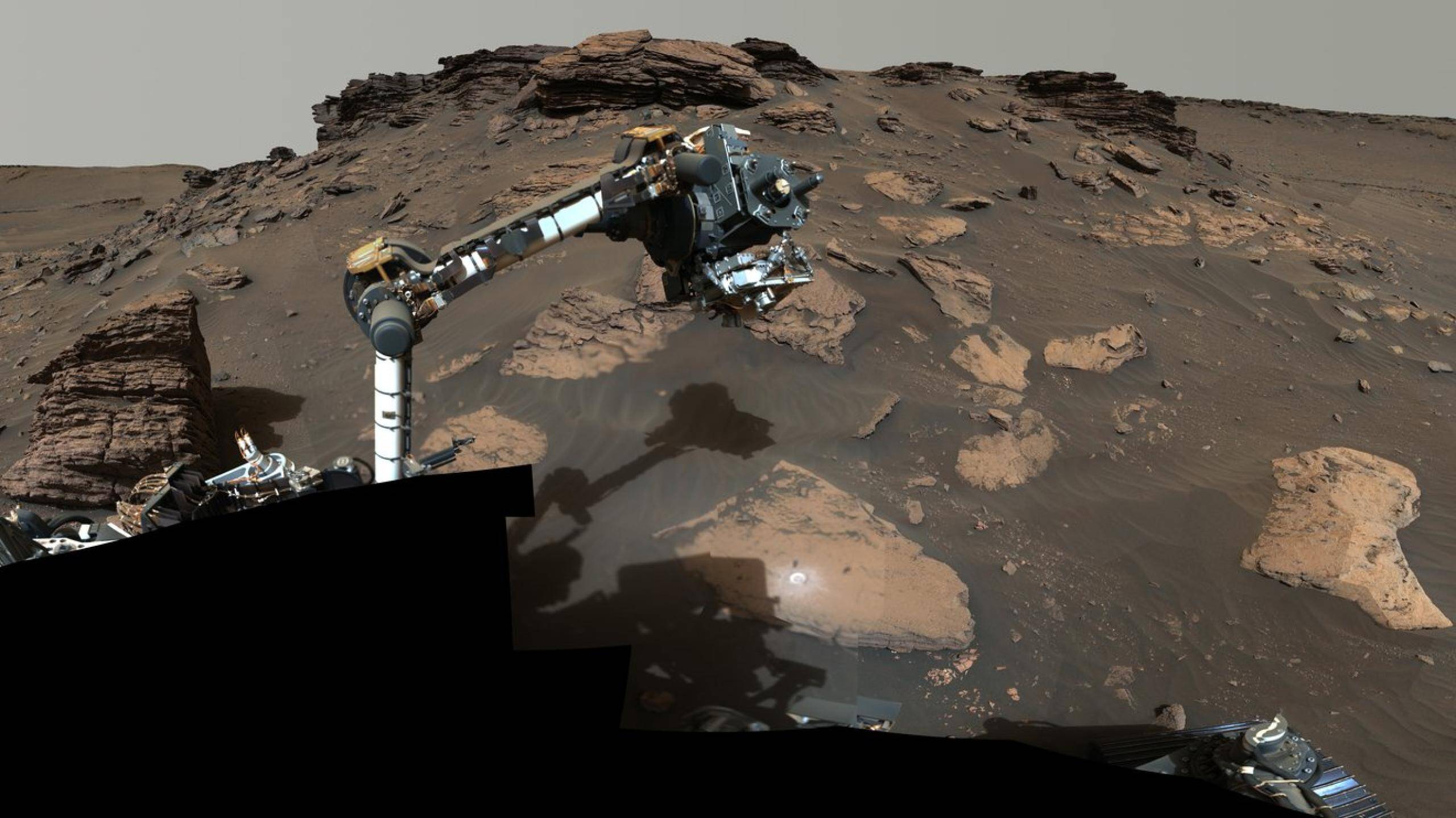Why is Mars red? Study points to new explanation for planet's distinctive color

A study of Martian dust , combining data from space missions and laboratory replicas of samples, suggests it was oxidized in the distant past, when liquid water was widespread.
Mars is easily identifiable in the night sky by its prominent red hue . Thanks to the fleet of spacecraft that have studied the planet over the past few decades, we know that this red color is due to oxidized iron minerals in the dust. That is, the iron bound to the rocks on Mars has at some point reacted with liquid water, or water and oxygen in the air, similar to how rust forms on Earth.
Over billions of years, this oxidized material (iron oxide) has been broken down into dust and spread across the planet by the winds , a process that continues today.
But iron oxides come in many flavors, and the exact chemistry of Martian rust has been intensely debated because its formation is a window into the planet's environmental conditions at the time. And closely tied to that is the question of whether Mars was ever habitable.
Previous studies of the iron oxide component of Martian dust based solely on spacecraft observations found no evidence of water contained in it. Researchers had therefore concluded that this particular type of iron oxide must be hematite, formed under dry surface conditions through reactions with the Martian atmosphere over billions of years, after Mars' early wet period.
Iron oxides with water However, a new analysis of spacecraft observations combined with new laboratory techniques shows that Mars' red color is better matched by water-containing iron oxides, known as ferrihydrite .
Ferrihydrite typically forms quickly in the presence of cold water, so it must have formed when Mars still had water on its surface. Ferrihydrite has retained its watery signature to this day, despite having been ground up and spread across the planet since its formation.
"We were trying to create a replica of Martian dust in the lab using different types of iron oxide. We found that ferrihydrite mixed with basalt , a volcanic rock, best matches the minerals observed by spacecraft on Mars," says lead author Adomas Valantinas, a postdoc at Brown University and formerly at the University of Bern in Switzerland, where he began his work with data from ESA's Trace Gas Orbiter (TGO), in a statement.

Other studies have also suggested that ferrihydrite could be present in Martian dust. Photo: iStock
" Mars is still the Red Planet. It's just that our understanding of why Mars is red has changed. The main implication is that because ferrihydrite could only have formed when there was still water on the surface, Mars oxidized earlier than we previously thought. Furthermore, ferrihydrite remains stable under current conditions on Mars."
Other studies have also suggested that ferrihydrite could be present in Martian dust, but Adomas and his colleagues have provided the first comprehensive proof through a unique combination of data from space missions and new laboratory experiments.
Martian dust replica They created the replica Martian dust using an advanced grinding machine to achieve the realistic dust grain size equivalent to 1/100th of a human hair. They then analyzed their samples using the same techniques as orbiting spacecraft to make a direct comparison, ultimately identifying ferrihydrite as the best match.
"This study is the result of complementary data sets from the fleet of international missions exploring Mars from orbit and at ground level," says Colin Wilson, ESA's TGO and Mars Express project scientist.
Mars Express’ analysis of dust mineralogy helped show that even highly dusty regions of the planet contain water-rich minerals. And thanks to TGO’s unique orbit that allows it to view the same region under different lighting conditions and angles, the team was able to tease out the size and composition of the particles — essential for recreating the correct size of dust in the lab.

NASA's Perseverance rover. Photo: NASA/JPL-Caltech/ASU/MSSS
Data from NASA's Mars Reconnaissance Orbiter, along with ground-based measurements from NASA's Curiosity , Pathfinder and Opportunity Mars rovers, also helped demonstrate the presence of ferrihydrite.
"We look forward to the results of upcoming missions, such as ESA's Rosalind Franklin rover and the NASA-ESA Mars Sample Return, which will allow us to further investigate what makes Mars red," Colin adds.
"Some of the samples already collected by NASA's Perseverance rover and awaiting return to Earth include dust; once we get these precious samples back to the lab, we'll be able to measure exactly how much ferrihydrite is in the dust and what this means for our understanding of the history of water (and the possibility of life) on Mars."
eltiempo






